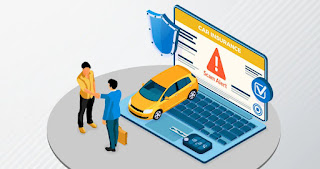Navigating the Road Ahead: A Comprehensive Guide to Commercial Auto Insurance Trends and Strategies
Introduction
Commercial auto insurance plays a pivotal role in safeguarding businesses that rely on vehicles for their operations. Whether it's a small delivery service, a construction company with a fleet of trucks, or a rideshare business, having the right commercial auto insurance coverage is essential. In this article, we will delve into the latest topics and trends in the world of commercial auto insurance, shedding light on the challenges and strategies that businesses and insurers face in this evolving landscape.
The Changing Landscape of Commercial Auto Insurance
The commercial auto insurance landscape is continually evolving, influenced by a variety of factors, including regulatory changes, technological advancements, and shifts in the business landscape. Here are some of the latest topics and trends in this industry:
1. Increased Demand for Last-Mile Delivery Services
With the surge in e-commerce and online shopping, last-mile delivery services have seen exponential growth. Companies like Amazon, UPS, and FedEx are continuously expanding their delivery fleets. This trend has led to increased demand for commercial auto insurance, particularly for vehicles involved in package delivery, food delivery, and courier services.
2. Rideshare and Transportation Network Companies
Rideshare platforms like Uber and Lyft have disrupted the transportation industry. As more individuals turn to these platforms for income, commercial auto insurance has become a hot topic. Many personal auto insurance policies do not cover commercial use, creating a need for specialized rideshare insurance policies or commercial coverage for drivers.
3. Regulatory Changes and Compliance
Commercial auto insurance is subject to specific regulations and compliance requirements that vary by state and country. Staying up to date with these regulations is crucial for both insurers and businesses. Recent regulatory changes, particularly related to insurance requirements for rideshare drivers, have prompted insurers to adapt their policies and offerings.
4. Telematics and Fleet Management
Advancements in telematics technology have transformed fleet management and commercial auto insurance. Telematics devices can monitor driver behavior, track vehicle location, and collect data that helps insurers assess risk more accurately. Businesses are increasingly using telematics to improve driver safety, reduce accidents, and lower insurance costs.
5. Environmental Considerations
As environmental sustainability gains importance, businesses are exploring eco-friendly transportation options. Electric vehicles (EVs) are becoming more common in commercial fleets. Insurers are responding by offering incentives and specialized coverage for electric and hybrid vehicles. This aligns with broader sustainability goals and may result in cost savings for businesses.
Challenges and Strategies in Commercial Auto Insurance
While these trends offer opportunities for growth and innovation, they also present challenges and complexities that businesses and insurers must address.
1. Navigating Complex Regulations
Commercial auto insurance is subject to a patchwork of regulations, making it challenging for businesses operating in multiple regions. Staying compliant with varying state or country-specific requirements can be burdensome. However, insurers are increasingly offering solutions to help businesses navigate these complexities.
2. Rideshare and Gig Economy Coverage
Businesses in the gig economy often face insurance coverage gaps when their employees use personal vehicles for commercial purposes. Insurers are developing specialized rideshare policies and endorsements to bridge these gaps, providing peace of mind for both businesses and drivers.
3. Risk Management and Safety
Ensuring the safety of drivers and vehicles is a top priority for businesses and insurers. Fleet management strategies, including driver training programs and telematics usage, can help reduce accidents and lower insurance premiums. Insurers often offer risk management services to assist businesses in implementing effective safety measures.
4. Data Privacy and Cybersecurity
As commercial vehicles become more connected, concerns about data privacy and cybersecurity are on the rise. Protecting sensitive data collected by telematics devices and preventing cyberattacks on connected vehicles are critical challenges that require robust security measures and insurance coverage.
5. Adapting to Electric and Autonomous Vehicles
The adoption of electric and autonomous vehicles in commercial fleets presents new insurance challenges. Insurers must assess the risks associated with these emerging technologies and develop specialized coverage options. Additionally, businesses need to consider the unique insurance requirements for these types of vehicles.
Conclusion
Commercial auto insurance is a dynamic and evolving field that plays a vital role in protecting businesses that rely on vehicles for their operations. The latest topics and trends in this industry reflect the changing landscape of modern transportation and the growing importance of environmental sustainability, technology, and regulatory compliance.
As businesses navigate the complexities of commercial auto insurance, it is essential to stay informed about the latest developments and work closely with insurance providers to tailor coverage to their specific needs. From addressing the challenges of the gig economy to embracing telematics and sustainable transportation options, businesses and insurers must collaborate to ensure that commercial auto insurance continues to provide comprehensive protection in an ever-changing world. By doing so, they can confidently navigate the road ahead and drive toward a safer and more sustainable future.


Posting Komentar untuk "Navigating the Road Ahead: A Comprehensive Guide to Commercial Auto Insurance Trends and Strategies"